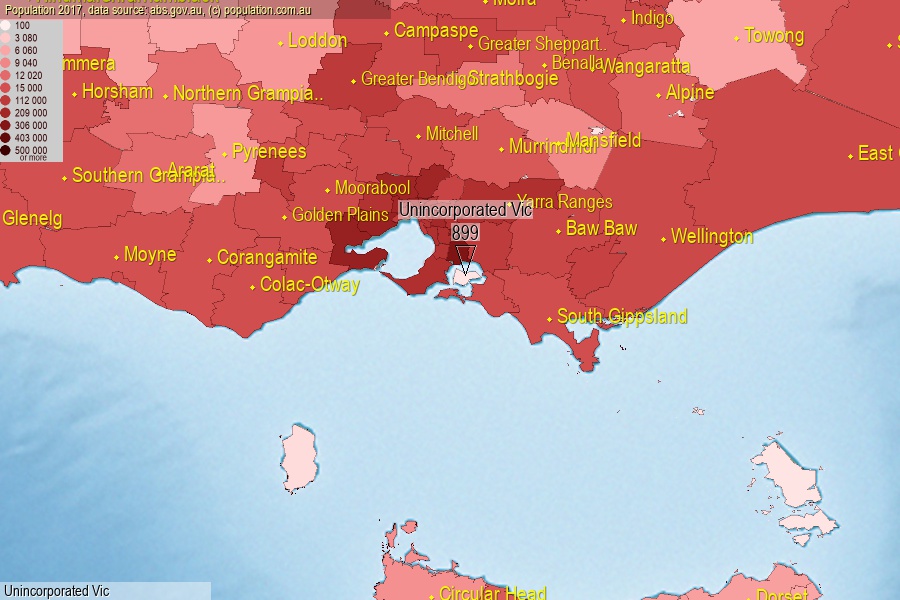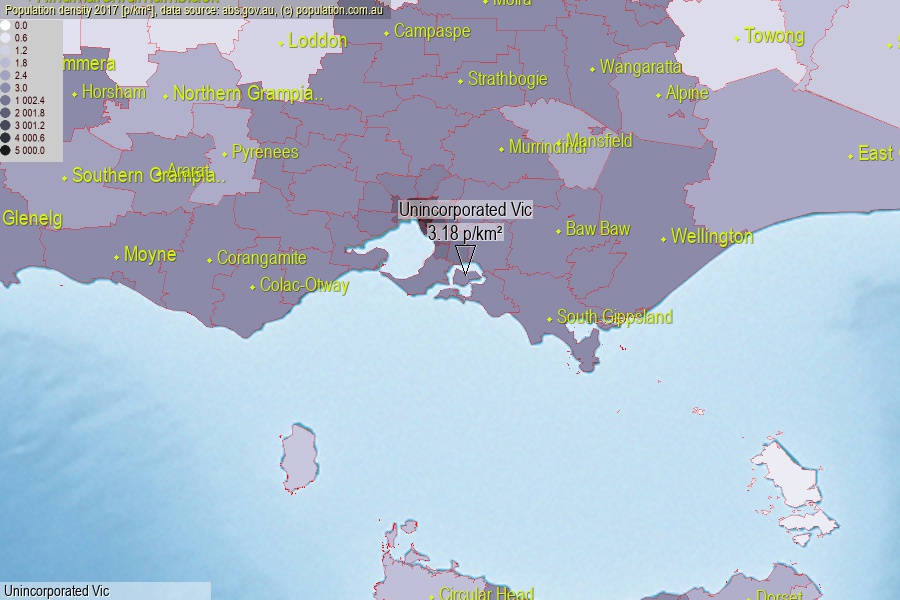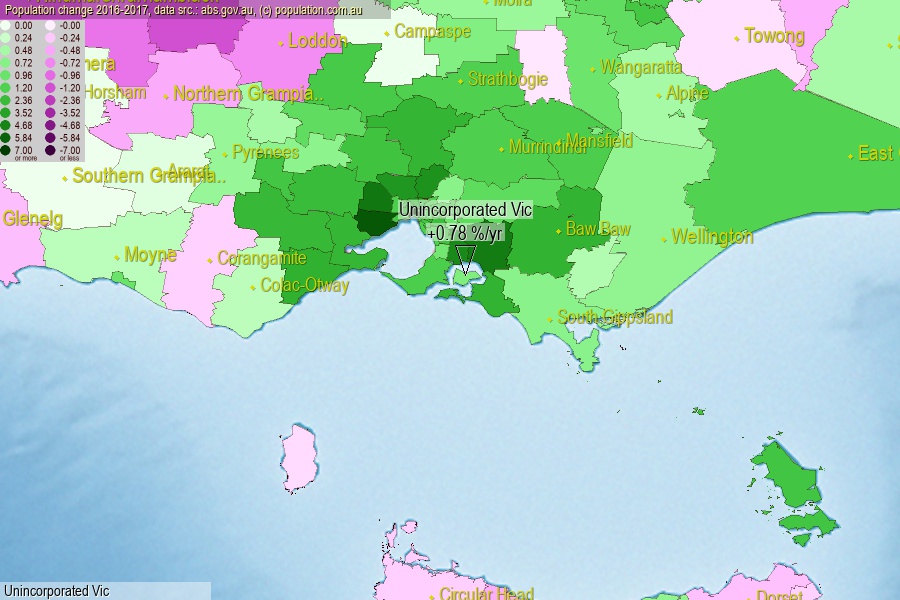 population.com.au
population.com.auLast official estimated population of Unincorporated Vic Unincorporated Areas (as Local Government Area) was 899 people (on 2017-06-30)[2]. This was 0.00% of total Australian population and 0.014% of VIC population. Area of Unincorporated Vic is 283.00 km², in this year population density was 3.18 p/km² . If population growth rate would be same as in period 2016-2017 (+0.78%/yr), Unincorporated Vic population in 2025 would be 957. [0]



Click to enlarge. Unincorporated Vic is located in the center of the images.
Population [people], population density [p./km²] and population change [%/year] [2]
[1996-2001] +2.58 %/Y
[2001-2002] +14.41 %/Y
[2002-2003] +12.02 %/Y
[2003-2004] +10.38 %/Y
[2004-2005] +9.25 %/Y
[2005-2006] +8.61 %/Y
[2006-2007] -2.11 %/Y
[2007-2008] +0.54 %/Y
[2008-2009] +0.54 %/Y
[2009-2010] +1.34 %/Y
[2010-2011] +1.32 %/Y
[2011-2012] +3.64 %/Y
[2012-2013] +1.38 %/Y
[2013-2014] +3.34 %/Y
[2014-2015] +3.23 %/Y
[2015-2016] +3.48 %/Y
[2016-2017] +0.78 %/Y
[0] Calculated with linear interpolation from officially estimated population
[1] Read more about LGA and Australian Statistical Geography Standard (ASGS) on abs.gov.au
[2] Population data from Australian Bureau of Statistics (Population and density: 2017; change: 2016-2017)
[3] Digital Boundaries: Australian Statistical Geography Standard (ASGS) 2016.